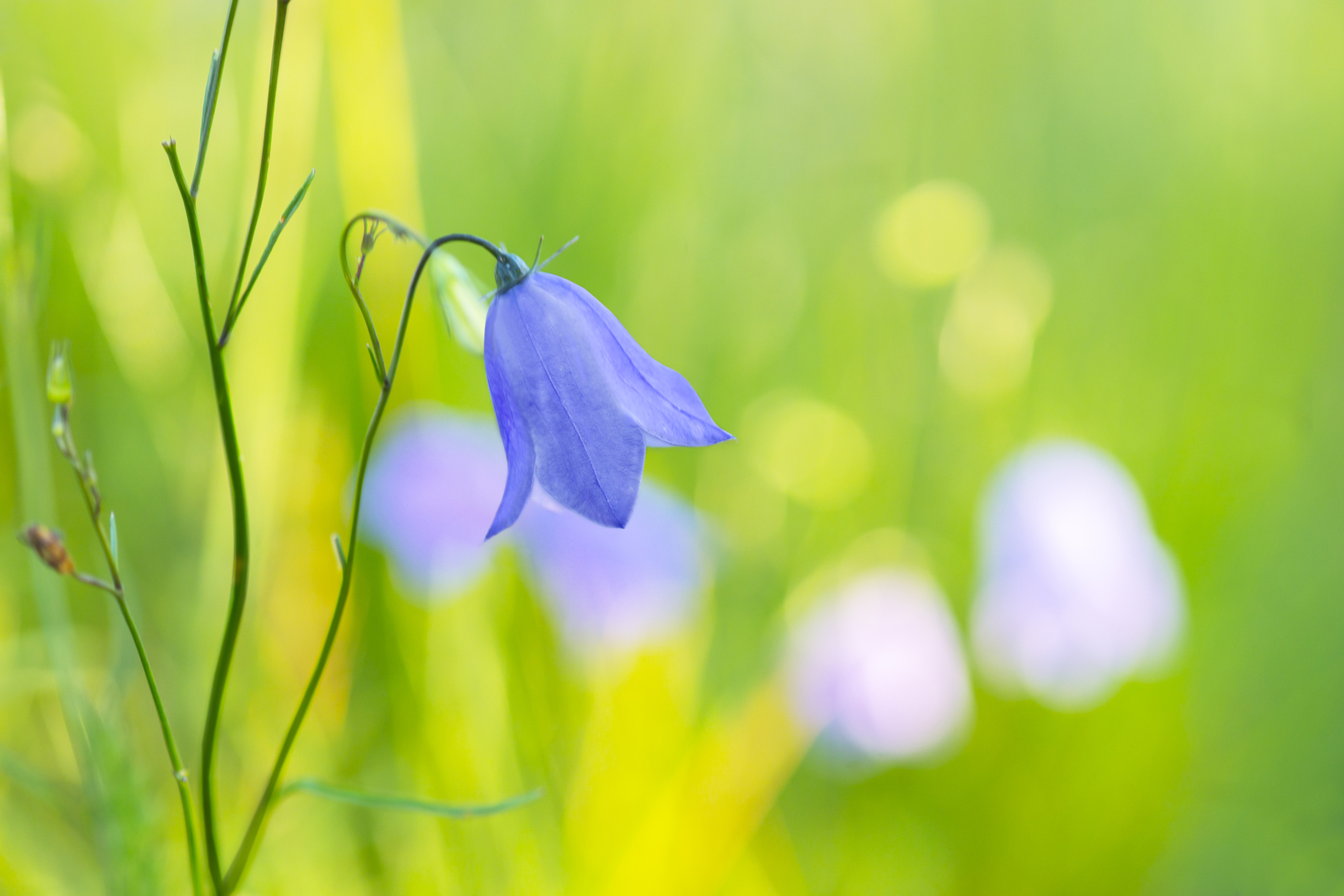Scottish bluebells, or harebells are they are also known, are putting on a fine show just now with their nodding pastel blue flowers adorning our hill pastures and glens.
It can be a real minefield when it comes to talking about bluebells and harebells. In Scotland, our familiar woodland bluebells that flower in spring are often known as wild hyacinths, while the smaller and more delicate harebells (which are a different species and flower from July to September) are frequently referred to as bluebells.
In essence, what you call them is all down to personal preference but I’ve always known these late summer blooming plants with their pretty bell-shaped flowers as harebells. They can show variation in colour and on my local patch of hill some are noticeably paler than others. Harebells seem to thrive best on dry, sunny soils, especially in upland and coastal areas.
In the past, harebells were very much a part of our country folklore and associated with magic and witchcraft, carrying such names as “witches’ thimbles” and “fairy bells”.
They were also sometimes known as “aul man’s bells”, where the aul man (old man) is a euphemism for the Devil. One reference from 19th century Scottish literature states that the plant was held with “dread” and “commonly left unpulled”. Why this benign flower should hold such mythical fear is hard to fathom.
Down by the river, I’ve come across several giant bellflowers – a relative of the harebell. I’ve never found this plant along this part of the river before, but I know they occur further upstream in the shady woods of the Devon Gorge in Kinross-shire. I suspect floodwaters have carried their seeds downstream to colonise new areas. They can grow to more than a metre in height and their large lilac flowers are most attractive.
The mixture of sunshine and heavy rain that has been so much a feature of our summer over the past few weeks seems to have benefited brambles, which are hanging heavy with rapidly growing berries. They will soon ripen and many birds and animals will take advantage of this bounty, including foxes, bank voles and wood mice.
The bramble is one of our most important wildlife plants, for in addition to the nutrition provided by the fruit, their white flowers in spring-time attract pollinating insects and the tangled prickly stems offer safe nesting sites for many birds.
The bramble has been important over the millennia for mankind too. As well as a source of food, the berries and roots were used for dye, and the leaves for treating wounds.
The bramble is genetically all-over-the-shop and shows great individual variation with several hundred micro-species having been recognised in Britain. As a result fruits from different areas, or even from within the same locality, may show subtle variations in flavour.
I don’t think my taste buds are refined enough to detect such differentiation – I’m just happy enough to pick these sweet flavoured berries with my purple stained fingers and enjoy.
Info
The berry at the end of the bramble stalk is the first to ripen and is said to be the sweetest of the fruit. Bramble plants are also important for many insects, including shield bugs and moth larvae.










